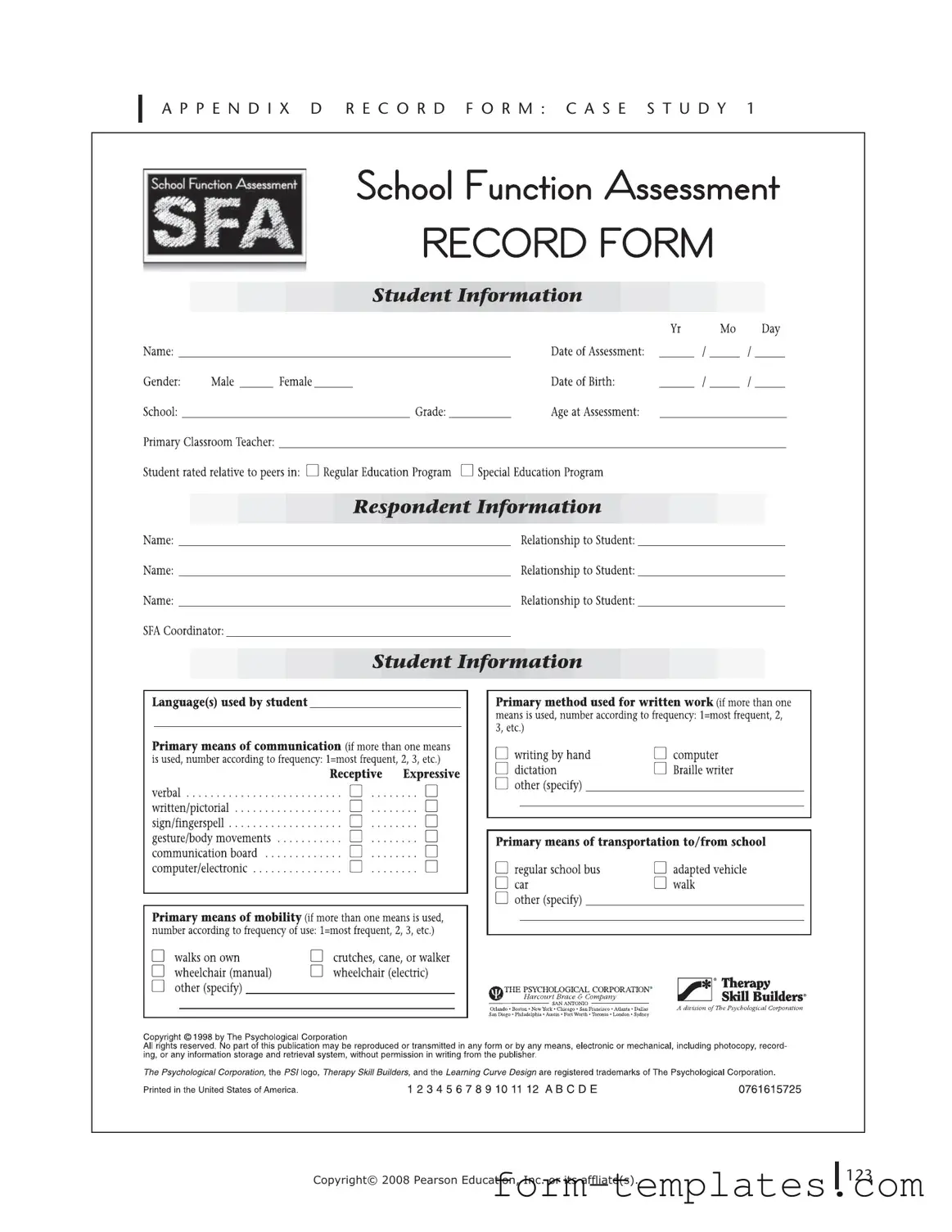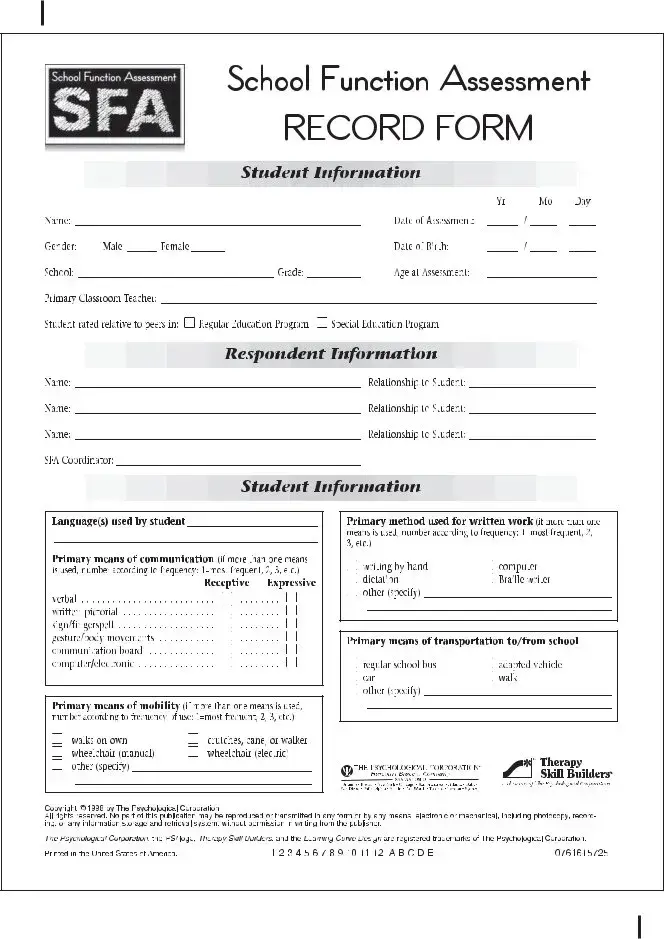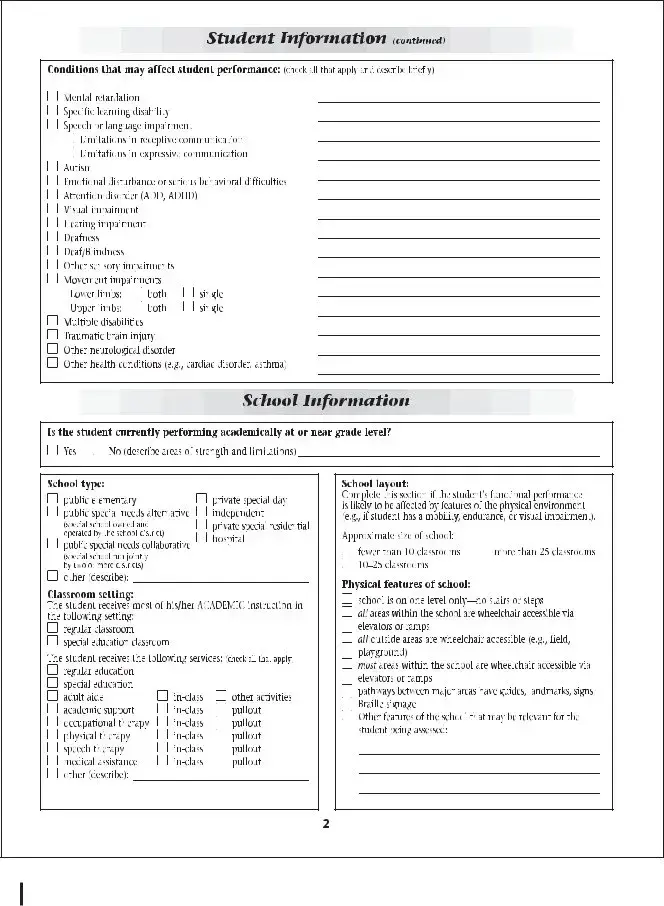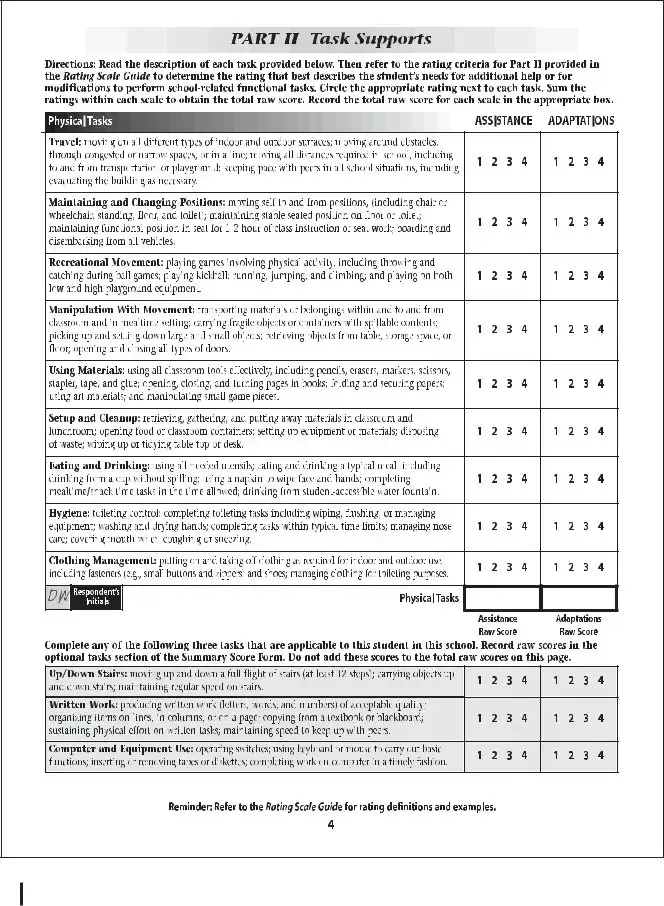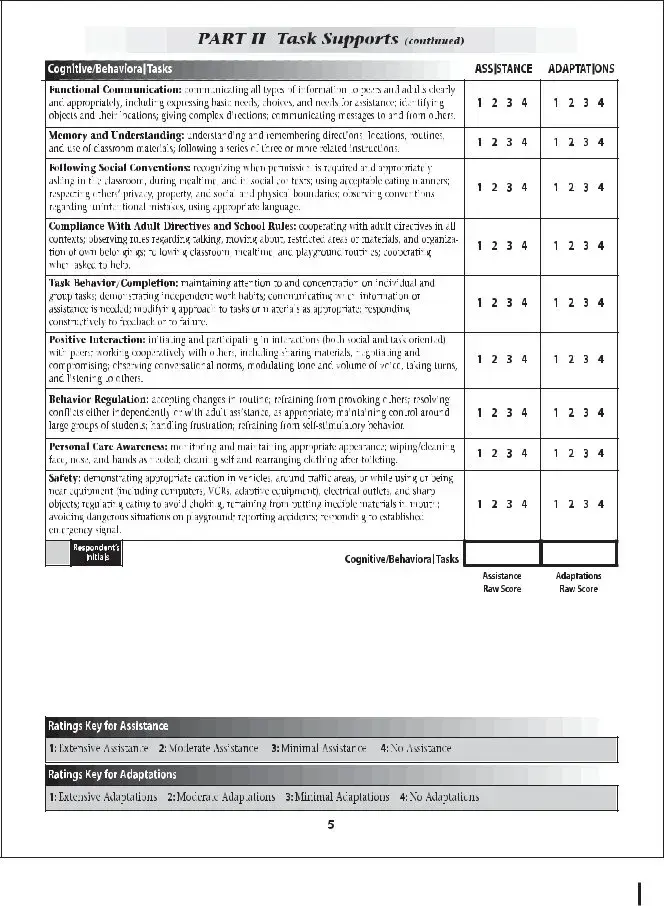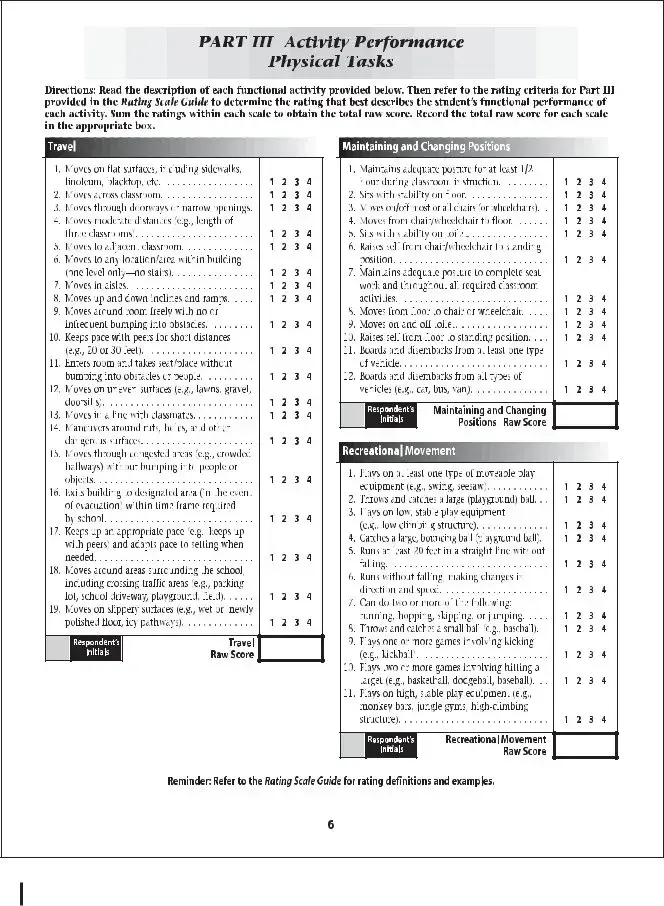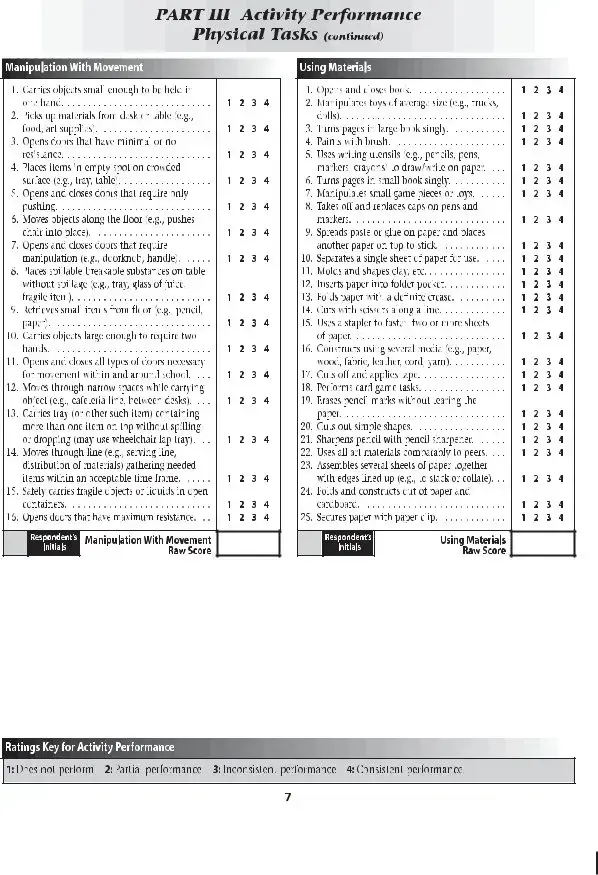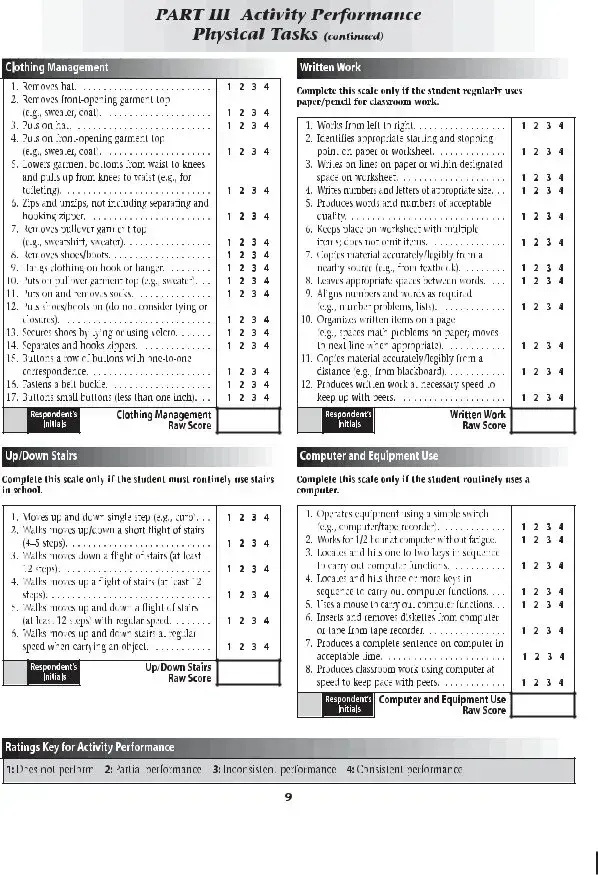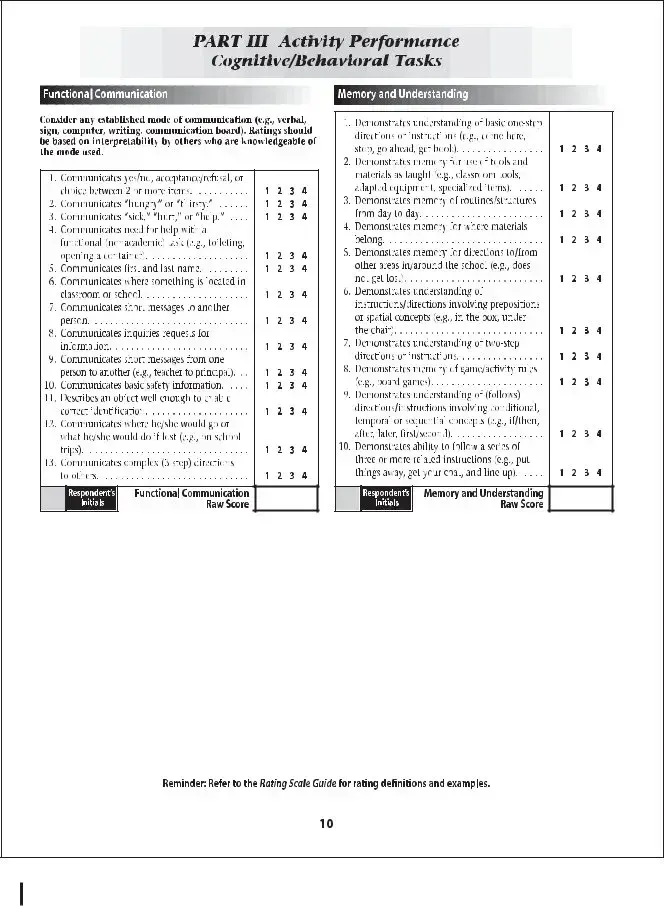The School Function Assessment (SFA) form is a tool designed to evaluate a student's functional abilities in a school setting. It focuses on how well a student performs tasks necessary for participation in school activities. The assessment covers various domains, including physical, cognitive, and social aspects of functioning.
The SFA is primarily intended for use by educational professionals, including special education teachers, occupational therapists, and school psychologists. These professionals utilize the assessment to identify student needs, develop individualized education plans (IEPs), and monitor progress over time.
The SFA is suitable for students from kindergarten through sixth grade. It is particularly useful for children with disabilities or those who may require additional support to succeed in a school environment.
The SFA is typically completed by a team of professionals who observe the student in various school settings. This may include classrooms, playgrounds, and lunchrooms. The assessment involves rating the student's performance on specific tasks and activities, which provides a comprehensive view of their functional abilities.
What areas does the SFA assess?
The SFA evaluates three primary areas:
-
Participation:
How well the student engages in school activities.
-
Task Supports:
The level of assistance the student requires to complete tasks.
-
Activity Performance:
The student's ability to perform specific tasks within the school environment.
How long does it take to complete the SFA?
The time required to complete the SFA can vary based on the student's needs and the complexity of the tasks being assessed. Generally, it takes about 30 to 60 minutes to gather the necessary information and complete the form.
What is the purpose of the SFA?
The primary purpose of the SFA is to identify students' strengths and challenges in a school setting. By understanding these factors, educators can tailor their instruction and support to meet individual student needs, thereby enhancing overall educational outcomes.
Can parents be involved in the SFA process?
Yes, parental involvement is encouraged during the SFA process. Parents can provide valuable insights into their child's abilities and challenges, which can help inform the assessment. Their input is crucial for developing effective support strategies.
How are the results of the SFA used?
The results of the SFA are used to guide educational planning and interventions. They help in developing IEPs, setting goals, and determining the necessary supports for each student. The information gathered can also be used to track progress over time and make adjustments to educational strategies as needed.
Is training required to administer the SFA?
While specific training is not mandatory, it is highly recommended for professionals administering the SFA. Understanding the assessment's framework and interpretation of results can significantly enhance the effectiveness of the evaluation process.
